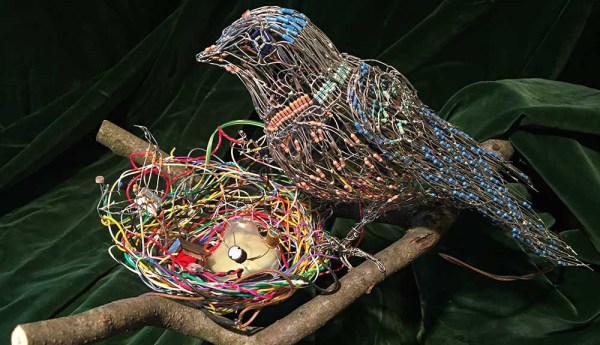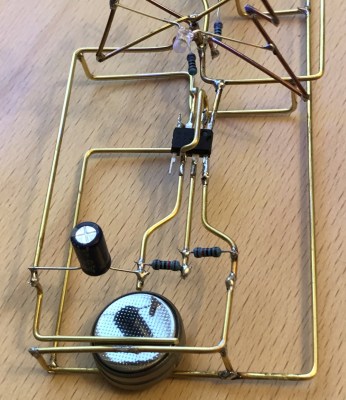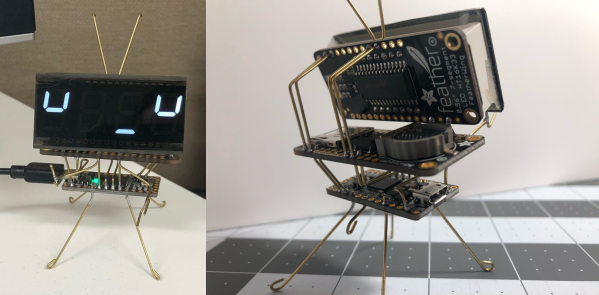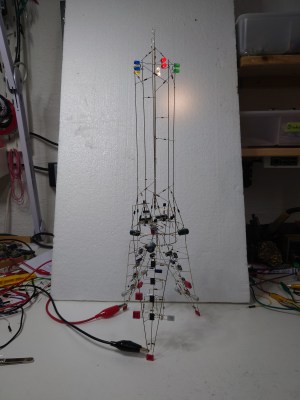Over the past few decades of evolution, cars have grown to incorporate a mind-boggling number of electric components. From parking distance sensors, to the convenience of power locks and windows, to in-car entertainment systems rivaling home theaters. Normally this interconnected system’s complexity is hidden between exterior sheet metal and interior plastic trim, but a group of students of Volkswagen’s vocational training program decided to show off their internal beauty by building the Volkswagen eGon exhibit.
Seeing a super minimalist Volkswagen electric Golf on the move (short Twitter video embedded below) we are immediately reminded of circuit sculptures. We saw some great projects in our circuit sculpture contest, but the eGon shows what can be done with the resources of a Volkswagen training center. Parts are bolted to the car’s original structure where possible, the rest were held in their representative positions by thin metal tube frames. At this scale, they look just like the brass rods used in small circuit sculptures! Certain component enclosures were replaced with transparent pieces, or had a window cut into them for visibility.
This exhibit was built for IdeenExpo, an event to expose students to science and technology. Showing them what’s under the cover in this “see-through car” with internal components tagged with QR codes pointing them to additional information. The number of electronic modules inside a car is only going to continue rising with the coming wave of electric and/or self-driving cars. Even if the timing of their arrival is debatable, we know we’ll need brain power helping to answer questions we don’t even know to ask yet. The eGon is doing a great job attracting attention and inviting bright young minds to participate.
Continue reading “Volkswagen EGon Is A Rolling Electric Car Circuit Sculpture”






















